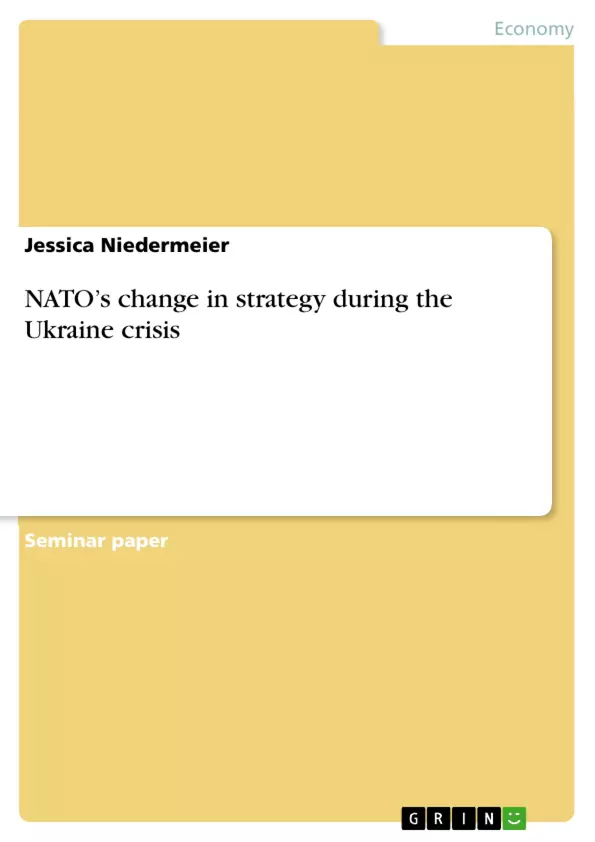In this paper, I shall examine the alliance “NATO” and its strategic concept concerning the Ukraine conflict. Against this background, the central question that motivates this essay is: “Why has NATO's strategy changed during the Ukraine crisis?” To answer this topic, this scientific paper is based on the assumption that NATO’s strategy became more relevant in the Global Security Architecture with the beginning of the Ukraine war.
Even though numerous articles have already been published on this topic framework, the work aim is to present NATO in detail, clearly and concisely, as well as to work out the current position of the alliance towards Russia and its possible future role. The results shed light on the upcoming relevance of the relationship between Russia and NATO.
The thesis consists of three chapters, the first of which is the introduction. The main contents of the work are divided into the following four sections—the first deals with NATO's strategy before the Ukraine war began. Based on the history of NATO from its inception to the present, I highlight the development of its tactics. The focus of the second part is the strategy since the Ukraine crisis. Furthermore, I would like to point out how NATO's strategy changed over time and explain the differences and the reasons for that in the last section. Support is provided by selected literature, current news such as the Washington Post and the New York Times, and publications by renowned think tanks like the Hudson and Brooking Institute. Moreover, the group discussion about foreign policy from the Summer Symposium in Washington, D.C., is also used as a source. In the third chapter, I answer the hypothesis and research question with the help of the information provided. Finally, I conclude by underlining NATO’s upcoming role regarding Russia and giving an outlook on the future relevance of the subject.
Inhaltsverzeichnis (Table of Contents)
- NATO's role in the Ukraine crisis
- NATO's Strategy: Past, Present, and Future
- Strategy of NATO before the Ukraine crisis
- NATO strategy since the Ukraine crisis
- The changes in strategy
- Reasons for the strategy change
- The future role of NATO
Zielsetzung und Themenschwerpunkte (Objectives and Key Themes)
This paper examines the strategic concept of NATO concerning the Ukraine conflict. It explores the reasons behind the shift in NATO's strategy during the Ukraine crisis and assesses the alliance's current position towards Russia. The work is based on the assumption that NATO's strategy has gained increased relevance in the global security architecture with the onset of the Ukraine war.
- NATO's strategic development before the Ukraine crisis
- The impact of the Ukraine crisis on NATO's strategy
- The reasons for the shift in NATO's strategy
- NATO's future role in the global security architecture
- The relationship between Russia and NATO
Zusammenfassung der Kapitel (Chapter Summaries)
The first chapter introduces the context of NATO's role in the Ukraine crisis, highlighting the global security threats and challenges facing the alliance. The second chapter analyzes NATO's strategy, focusing on its historical evolution, the changes implemented since the Ukraine crisis, and the underlying reasons for this shift. The third chapter will explore the future role of NATO, examining the implications of the ongoing crisis and the evolving relationship between Russia and NATO.
Schlüsselwörter (Keywords)
The primary focus of this paper is on NATO's strategic concept, particularly its evolution in response to the Ukraine crisis. The paper examines the relationship between Russia and NATO, considering the impact of the Ukraine conflict on the global security architecture. Key themes include NATO's historical development, strategic changes, and the challenges facing the alliance in the current geopolitical landscape.
- Quote paper
- Jessica Niedermeier (Author), 2022, NATO’s change in strategy during the Ukraine crisis, Munich, GRIN Verlag, https://www.grin.com/document/1442064



